Learn about retraction and drawback (or suck-back) and discover how the right handpiece that can help protect your patients from cross-contamination with solutions like anti-retraction valves and Zero-Drawback technology.
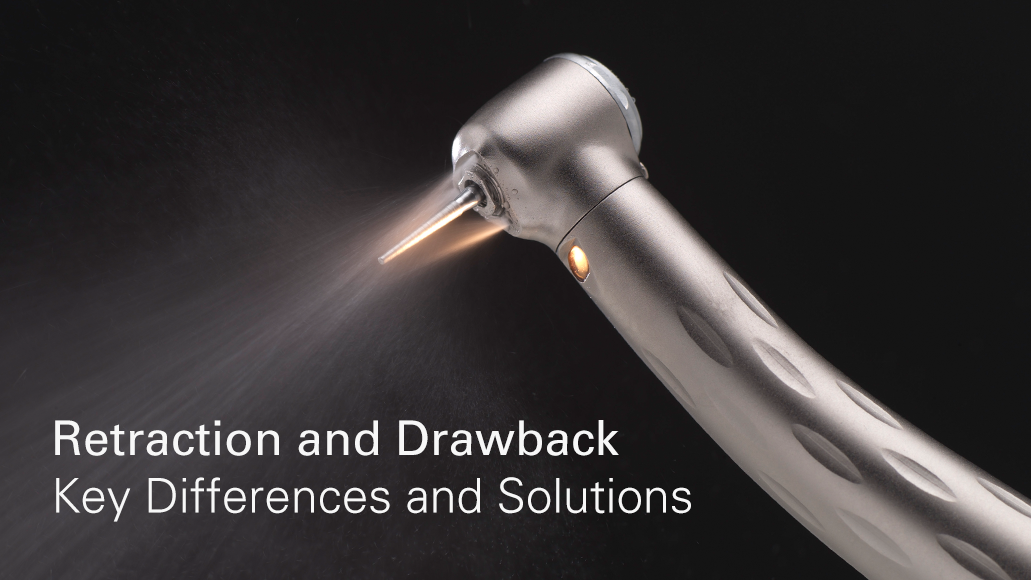 The COVID-19 pandemic has awoken a sense of urgency and concern in the dental world. Dental practices and schools are changing the way they operate by enhancing their cross-contamination response. Dental equipment manufacturers are moving quickly to provide their customers with good solutions to help them respond to this new normal. One of those solutions has been to reduce the propagation of aerosols during dental procedures.
The COVID-19 pandemic has awoken a sense of urgency and concern in the dental world. Dental practices and schools are changing the way they operate by enhancing their cross-contamination response. Dental equipment manufacturers are moving quickly to provide their customers with good solutions to help them respond to this new normal. One of those solutions has been to reduce the propagation of aerosols during dental procedures.
Air-driven vs. Electric Motor handpieces
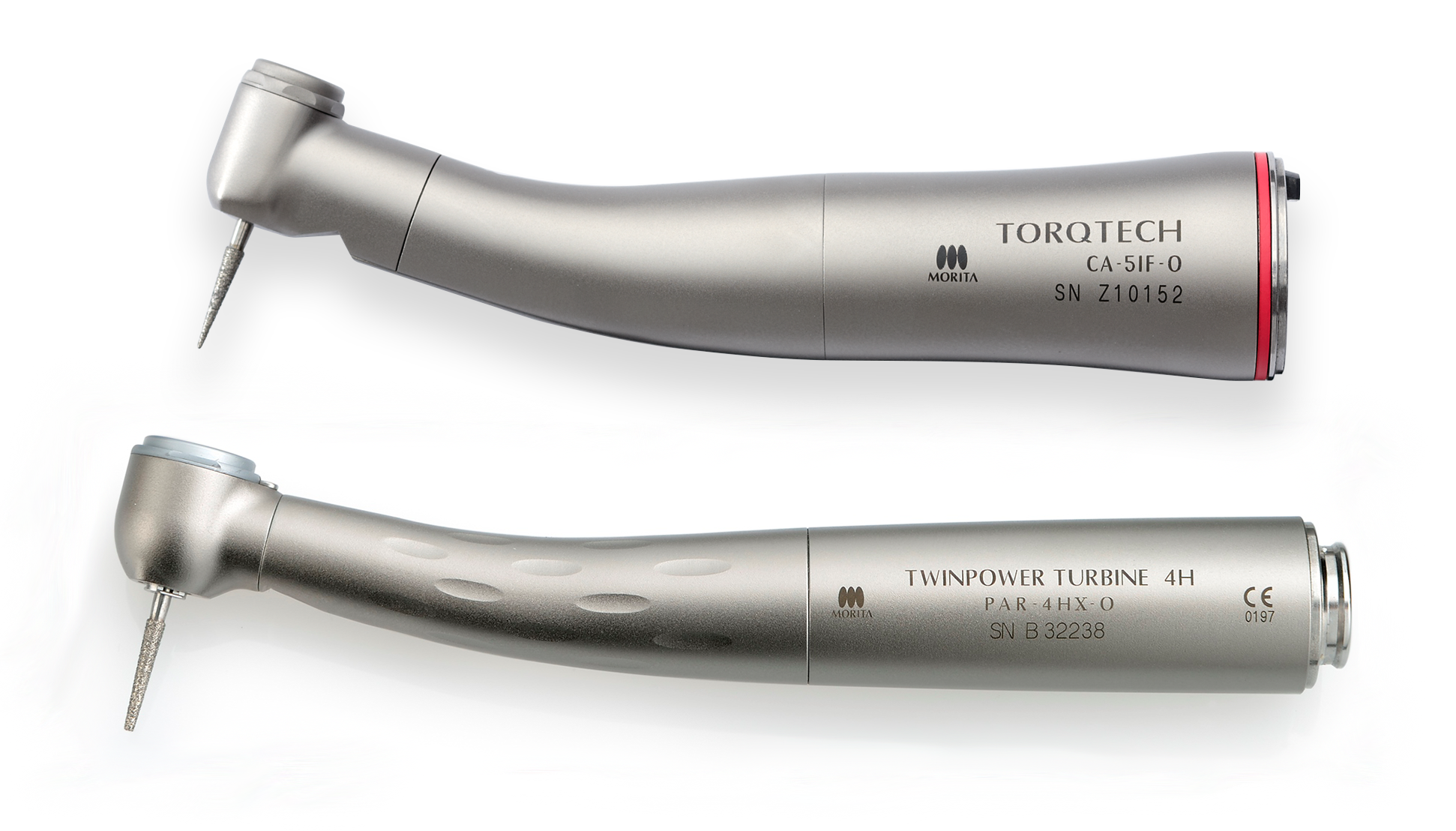
Keep in mind, eliminating aerosols is nearly impossible with the use of air-driven handpieces and electric contra angle motor attachments. In general, contra angle attachments generate fewer aerosols than air-driven handpieces since they do not rely on drive air to run the impeller. Many practitioners like them for their stable and high torque. This may be a good solution to reduce aerosol generation but the costs of converting to electric motor driven attachments are not trivial. Also, one must consider an increase in weight when compared to air-driven handpieces.
What to look for in air-driven handpieces?
 Assuming you are not willing to go the electric motor route, choosing the right air-driven handpieces can be challenging. There has been a lot of talk about anti-retraction and anti-suck-back features but little clarification about what they are and how they work.
Assuming you are not willing to go the electric motor route, choosing the right air-driven handpieces can be challenging. There has been a lot of talk about anti-retraction and anti-suck-back features but little clarification about what they are and how they work.
Retraction, Anti-Retraction valves, and Flushing
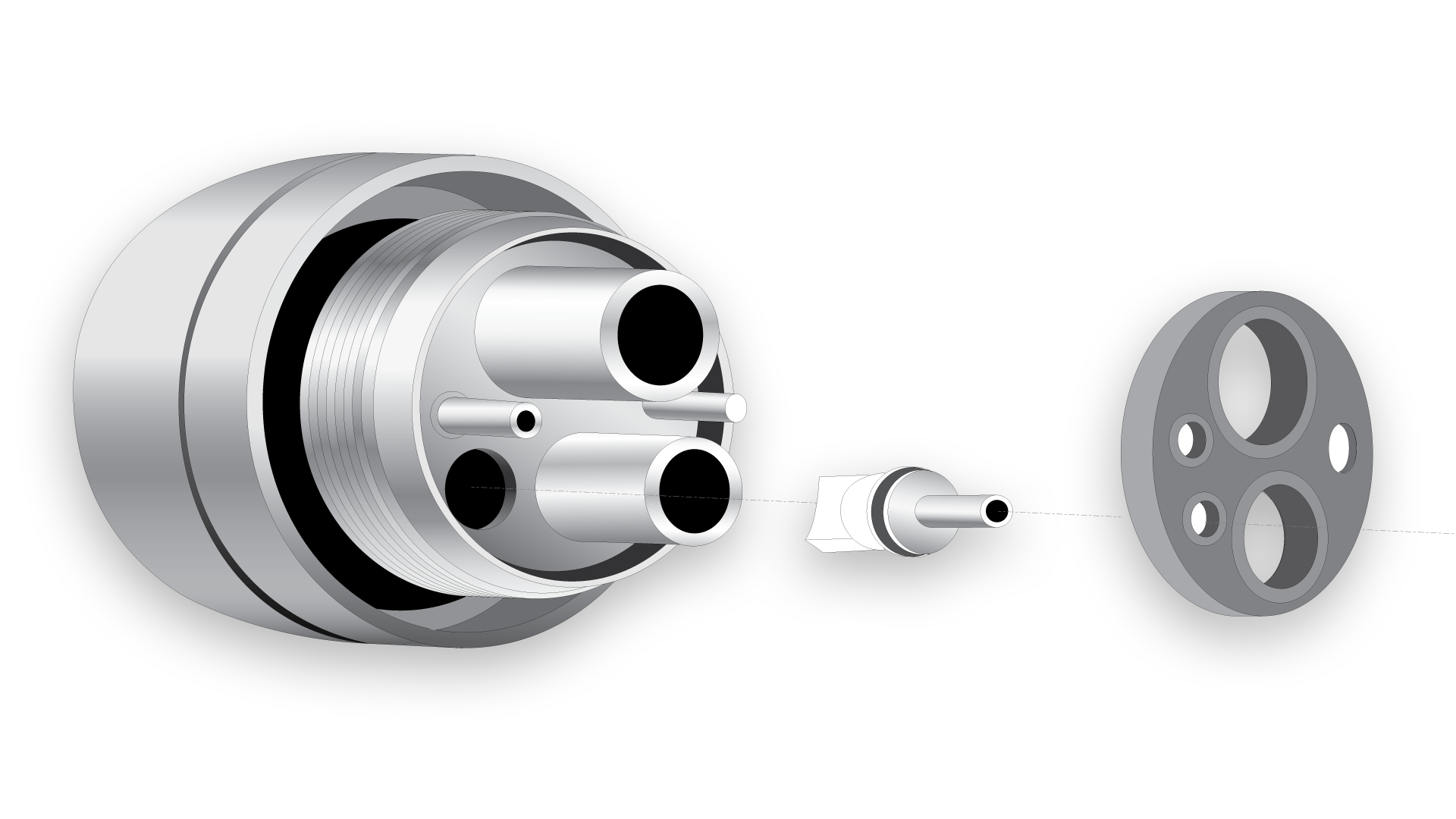 Retraction is essentially related to water being pulled back into the system through the water lines. So, retraction is strictly related to fluids and debris within those fluids.
Retraction is essentially related to water being pulled back into the system through the water lines. So, retraction is strictly related to fluids and debris within those fluids.
Many manufacturers, including Morita, have already solved this problem by introducing anti-retraction valves throughout the system. Essentially, these valves use a duckbill shape which blocks any fluids from getting back into the water lines. These can be present in your treatment unit and even in your handpiece itself. Usually, you will find multiple anti-retraction valves as fail-safes. Most major manufacturers include them within handpieces, couplings, and the treatment unit. This technology has been around for a while and the ISO 7494-2 standard requires your treatment unit to include it.
According to “Transmission routes of 2019-nCoV and controls in dental practice”, “high-speed dental handpieces without anti-retraction valves may aspirate and expel debris and fluids during the dental procedures. More importantly, the microbes, including bacteria and virus, may further contaminate the air and water tubes within the dental unit, and thus can potentially cause cross-infection.”
Should retraction occur, you can still flush and disinfect your waterlines as needed. In summary, we can say that the potential for cross-contamination here is quite low.
Drawback, Quick Stop, and Zero-Drawback
 Unlike retraction, drawback is related to the air lines. Aerosols, created during dental treatment, are drawn back into the handpiece, your air lines, and eventually into your treatment unit. When the drive air stops, the turbine continues to spin. This creates negative pressure in the system and begins to draw aerosols back into the system, kind of like a vacuum. This is also known as suck-back.
Unlike retraction, drawback is related to the air lines. Aerosols, created during dental treatment, are drawn back into the handpiece, your air lines, and eventually into your treatment unit. When the drive air stops, the turbine continues to spin. This creates negative pressure in the system and begins to draw aerosols back into the system, kind of like a vacuum. This is also known as suck-back.
This effect is cumulative. Each time you activate the drive air, the drawback forces any contaminates further into the handpiece, past the coupling, and eventually into your air lines, and your treatment unit. Keep in mind that you cannot disinfect and flush the air lines of your treatment unit.
Many manufacturers will include a braking system to reduce the spinning motion of the turbine once the drive air stops. Terminology for these types of braking systems may vary but at Morita, we call it Quick Stop.
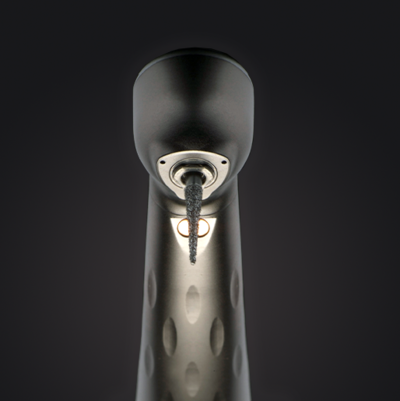
A Quick Stop braking system can help reduce drawback but not eliminate it. The turbine continues to rotate after the drive air stops and, like any braking system, we cannot force the turbine to stop instantaneously. It takes time and during that time, drawback is a concern. In addition, smaller head sizes create less inertial force which also contributes to reducing stopping times.
Smaller head sizes or quick stop braking mechanisms will help stop the turbine faster and reduce the number of possible contaminants from being drawn back into the system.
Reduction is not enough as the effect is cumulative, and even minor drawback can be enough to contaminate your system.
According to “In vitro study of anti-suck-back ability by themselves on new high-speed air turbine handpieces”, some manufacturers will introduce a labyrinth system to reduce drawback, but these will not eliminate the drawback effect.
Only the Zero-Drawback system was found to eliminate drawback through this study.
Demonstrating Drawback
Many of us in the marketing department felt we knew the feature well but had never seen it in action and felt that it needed to be visualized. So, we joined forces with the R&D department to conduct direct comparisons. The team was inspired by the methodology used by Toshiko OZAWA, Masako NAKANO, Takashi ARAI to conduct the “In vitro study of anti-suck-back ability by themselves on new high-speed air turbine handpieces” study.
For our drawback comparisons, we used a sealed environment. We used a rubber stopper to create an airtight seal at the top of a cylinder so that the only way air can get out is through the handpiece itself. We observed the whole handpiece head and not just the front or back. This was important because drawback can occur anywhere on the handpiece head.
The vacuum, created by the drawback effect, will pull water up through a center tube. The stronger the drawback the higher the water will rise.
As the OZAWA, NAKANO, and ARAI study was conducted in 2010 (results reconfirmed by Quan, Yingjun & Lim, Joong-Yeon & Kim, Kyoung-Nam & Kim, Yang-Soo. (2015)), we wanted to run the comparisons with newer handpieces from top tier manufacturers to see if the claims still held true. The TwinPower Turbine™ was the only handpiece to demonstrate a complete lack of negative pressure. Brand A (in the video above) performed well because of the presence of an effective braking mechanism but still showed slight drawback.
Having seen the efficacy of braking systems on drawback, we wanted to see the differences between braking systems by different manufacturers.
In the video above the TwinPower Turbine™ performed with braking times under 2 seconds. Our Standard head surprised us with a stopping time of approximately 0.55 seconds which is the fastest time we recorded. Brand B in the video uses an effective braking system and was faster to stop than our High Torque. This same brand also performed well in the drawback comparison but could not eliminate it completely. Brands A, C and D had significantly longer stopping times.
Takeaways
From a marketing perspective it was quite interesting to participate in these comparisons. This hands-on experience allowed us to increase our knowledge of different phenomena that could potentially affect dental practices. It was important for us see how our Zero-Drawback feature worked and how it compared with other technologies. We hope that we could shed some light on this important topic and demonstrate our unique approach to solving it.
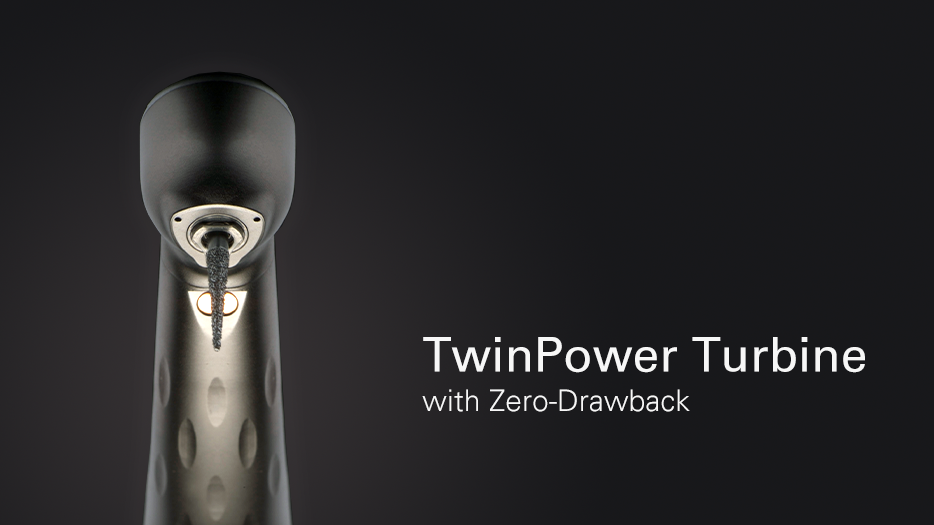
If you are interested in learning more about the TwinPower Turbine™ and how Zero-Drawback works, please contact your local Morita distributer or representative. They can provide you with further materials, information about Webinars and other events.
References:
Ozawa T, Nakano M, Arai T. In vitro study of anti-suck-back ability by themselves on new high-speed air turbine handpieces. Dent Mater J. 2010;29(6):649-654. doi:10.4012/dmj.2010-008
Peng, X., Xu, X., Li, Y. et al. Transmission routes of 2019-nCoV and controls in dental practice. Int J Oral Sci 12, 9 (2020). https://doi.org/10.1038/s41368-020-0075-9
Quan, Yingjun & Lim, Joong-Yeon & Kim, Kyoung-Nam & Kim, Yang-Soo. (2015). A testing methodology for suck-back behavior of high-speed air-turbine dental handpiece. Korean Journal of Dental Materials. 42. 10.14815/kjdm.2015.42.1.29.




